Hybrid working has become a popular way of working since the pandemic, but what is hybrid working for MSPs?
MSPs?
The pandemic forced the world to change the way it would work for a lot of industries. With robust cloud solutions already in place, and virtual workspaces within our grasp, a vast amount of office-based workers were able to work from home.
Necessity and circumstance forced a change in practice for many companies, which drove a need for more of us to take up remote working.
Hybrid Working for MSPs – The New Normal
Since the effects of the pandemic began to decline, some have returned to a normal working pattern again.
However, after having proved that working from home is not only possible, but in many cases, preferred, both employers and employees are looking to capitalise on the benefits of a hybrid working model. And they expect more from their IT providers. They need to be able to deliver technology that meets their remote needs.
The Office of National Statistics on Business and Individual Attitudes for the Future of Homeworking in the UK (April 2021), reported that:
- Of working adults currently homeworking, 85% wanted to use a “hybrid” approach of both home and office working in future
- When asked about homeworking, working adults stated work-life balance was the greatest positive, while challenges of collaboration were the greatest negative
You can view the report in full here.
What Does a Hybrid Working Model Look Like?
When it comes to hybrid working models there is no one-size-fits-all.
According to Opensourcedworkplace.com, the five most common approaches are:
- At-Will and Remote-First – Allowing employees to prioritise working remotely
- Office-First – Similar to the above, except more office-centric
- Split-Week – Days are assigned as office-based or remote according to a schedule
- Week-By-Week – Assign weeks when certain employees need to be in the office
- Designated Teams Hybrid – Assign which teams work from the office and which at home
The first two of these are Work Environment models, and they allow employers to choose whether they want their staff to be more present in a central office, or not.
The third and fourth in the list above are Scheduling models, and involving planning who will be in the office, and when. This allows employers to plan a constant presence in the office, and manage the numbers of staff on site.
The final option is an Employee Division model, where remote working may be allowed by their function or department. Certain functions may be more suited to remote working than others.
There are pros and cons with each of these models, and it may be that a different model altogether is preferred for your business or your clients.
How Can IT Businesses Implement an Effective Hybrid Working Solution?
As a business, once you have decided on the right hybrid model, you should implement the necessary changes to enable this style of working.
You have a number of considerations to take into account; at the very least, you need to consider:
Cloud solutions and team management software: A secure cloud solution, with the applications, storage and security teams need to do their job effectively, as well as a reliable communications and workload management tool is essential.
Remote workers have the hardware they need: A laptop, a phone and a broadband connection, as well as access to all the areas they need to access. An effective hybrid onboarding programme is vital to removing any barriers a remote worker may have.
Virtual and Onsite Collaborative Workspaces: They must have adequate tools to ensure remote live interactions are as inclusive as face-to-face interactions.
In addition, you’ll need to think about an appropriate cybersecurity protocols to keep your data and assets safe.
For further information on making remote working a success, Charlotte Trueman of ComputerWorld wrote a great article on the subject in the middle of the pandemic, and it’s still a relevant read. You can find the link below.
Other Considerations for Employers
Collaboration solution company Avocor wrote an interesting blog about successful hybrid working environments.
They address a number of points employers should consider. Here are some of the highlights:
The Impact on Staff
Aside from the technological needs, employers need to consider how to manage the impact on staff.
Hybrid working can be very unsettling for workers who have always had set hours and commute. Flexible working, sometimes means flexible for the team, but not necessarily the individual.
Flexibility, Managed
The intention is not to put added pressure on staff, but instead understand their needs better. For example, parents who need to do the school run twice a day may benefit from having this time out with the intention of working an extra hour after the kids have gone to bed.
Some people are night owls, and work better without the distractions of the day. While others might like to have an extended lunch break to get in a workout at the gym, and then work through until the evening. These arrangements need to be managed with some flexibility from all; employers and employees.
Inclusion and Connection
Another consideration for employers is to combat alienation and other mental health concerns. It’s important to connect with your colleagues and have one-to-ones with your peers and your manager.
The Benefits of Hybrid Working
There are many benefits to a hybrid working model, but here are the most common:
Employees can keep their own schedule – If your virtual office is in the cloud, you can work at any time that suits you.
If you are a unpaid carer or if you have a school run to do, you can work around those demands. If you’re a night owl, you can work through the night and have a lie in in the morning.
Fewer overheads – With fewer people needing to be in the office at any one time, not so much space is required. Office premises can be downsized, meaning less spent on utilities as well.
Sustainability – Work from anywhere means a lower carbon footprint with fewer commutes in the working week.
Reduce exposure to illness – Fewer people in the office means you’re less likely to spread diseases like cold and flu to your colleagues.
Hire anywhere in the world – You’re not confined to hiring people who can commute to your office if you have a virtual office set up.
The Challenges of Hybrid Working
The Harvard Business Review described the challenges of Hybrid Working as the 5 Cs, which are:
Communication
The tools of communication (hardware, apps, telephony, etc.) and the practices of communication (conducting meetings, sharing ideas and discussing timescales for projects). Both of these need to be in place and adequate for the needs of the business.
Coordination
Not being in the same physical space as people you work with has its own limitations. For example, if you’re remote, you miss out on the small conversations and minor decisions that happen every day with your colleagues in the office. The challenge here is to avoid those fault lines where things are missed, which can create a lag in workflow between you and your colleagues.
Connection
Professional networks and mentoring relationships are important for advancing the workplace. And it builds the stable growth of a business and the career of an individual. Hybrid working risks a divide between those who are perceived as central to the organisation or team, and those who feel outside of it, and more peripheral.
When people do not feel as valued as they should, they tend to look for employment elsewhere. And if they’re freelance, will put more time into other clients, or indeed, focus on their own business above their client’s business.
Creativity
Collective creativity suffers when you don’t share a working environment. Having meetings over Zoom and confining that brainstorming time to short intervals is not the same as having that ability to fluidly exchange in a discussion in the office. Individual creativity is better in the early stages, because you have fewer distractions.
However, you only have capacity for a few ideas before they start to dry up. Having some social interactions and spontaneous conversations with colleagues can generate new ideas, and even a change of environment – a different window to look out of, different lighting in the room, etc – can be a catalyst to creativity.
Culture
Fostering a working culture where everyone respects the company direction and each other, is a massive challenge for distributed teams. Regular meetings and opportunities to socialise can mitigate this problem.
Clear direction and a strong cultural identity can entice new talent to businesses that rely on their distinctive feel. However, maintaining that culture is difficult when there is a high turnover of staff, and new staff rarely get to meet in person.
Challenges in a Depleted Talent Pool – How to Retain and Attract Good Staff
While a lot of us are feeling the pinch of increased supplier costs, we are also feeling the bite of recruitment, staff retention and skill shortages.
It’s more important than ever to hold on to our best staff, and make our businesses attractive to new employees. While we enjoy some growth in the MSP sector, we have to have the skills on board to scale our operations.
Alongside competitive pay, benefits and development opportunities, flexible working conditions are an attractive thing to offer potential hires. However, this is not enough to draw all candidates to a hybrid role.
In order to stand out in a crowded market, you have to make potential employees feel valued. Advertise a comprehensive support structure with a healthy company culture for all. This should be underpinned with regular face-to-face meetings and social gatherings to encourage good relations within the team or department.
As well as new hires, we need to retain the good staff we already have, and help them feel valued. This can be difficult to achieve in remote teams, so regular meetings, promoting opportunities to gain new skills and celebrating wins has become more important than ever.
If we look at the chart below, we can see the top three search factors pre-lockdown and after lockdown. It shows that the ability to work remotely and work flexible hours were high priorities, after salary considerations:
The Opportunities in Hybrid Working for MSPs
There are some great opportunities for Managed Service Providers as SMBs move toward hybrid working. Here are just a few:
Cybersecurity – When working from anywhere, a business wants its data and assets protected, and training for staff is also an option.
Remote Collaboration Tools – From connectivity to productivity. Shared workspaces, communication tools and calendars are essential. Dashboards and team-work software a bonus.
Cloud Services – Software-as-a-service, Kubernetes containers, and many, many more options.
Managed Networking and 24/7 Support – A fully-monitored network, using RMM tools, backed by a round-the-clock remote service desk.
Your Expert Advice – The value you bring as an experienced MSP in bringing these solutions together. This expertise is worth so much to SMBs realising their digital transformation goals.
In Conclusion
Hybrid working is not going away any time soon. Employers and workers need to adapt to a changing work climate where hires can come from all over the world. Remote workers are often people who want a better work/life balance.
Many IT businesses are already prepared for working remotely, whether that’s using cloud technology or remote network monitoring. While other businesses are using mobile apps to carry out their basic functions, like scheduling, work-sharing and, of course, communication.
The benefits of hybrid working far outweigh the challenges. In the last two years our offices have had to remain closed or held fewer numbers through the pandemic. We’ve had to put our trust in the people that work for us to keep our businesses running, while they continued to work from home.
We have the tools to make managing our lives around our work much easier, but with this great power comes the great responsibility. In this case, the responsibility of looking after our company culture and our staff, which will add greater longevity to our business.
For MSPs, growth has come from a need for many SMBs to accelerate their digital transformation plans. To make working remotely and collaboratively easier, while also remaining secure across the wider network.
Resources Mentioned in This Article
- Office of National Statistics on Business and Individual Attitudes for the Future of Homeworking in the UK (April 2021)
- Open Sourced Workplace: Five Types of Hybrid Work Models (and How to Implement Them)
- ComputerWorld: How to Make the Hybrid Workplace a Success
- Avocor: How to Create a Successful Hybrid Working Environment in 2022
- Harvard Business Review: 5 Challenges of Hybrid Working – and How to Overcome Them
Do you have any insights on a hybrid working model that has worked for you? Or have you helped transform a client’s business to incorporate more remote systems? We would love to hear about it in the comments.


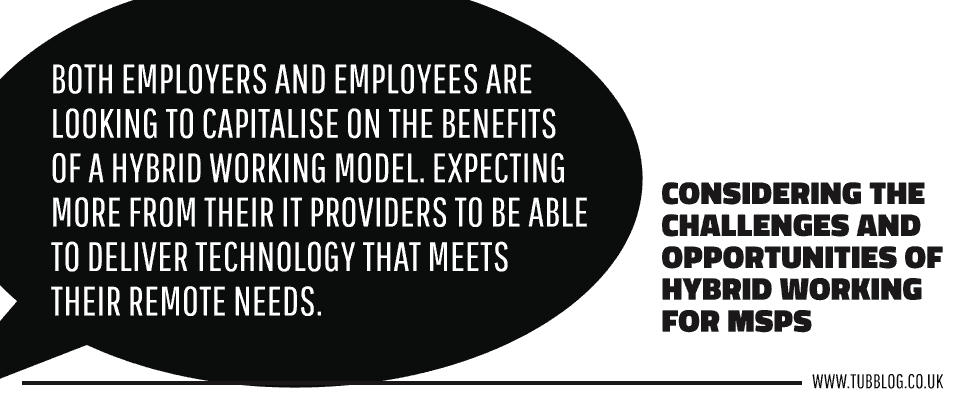
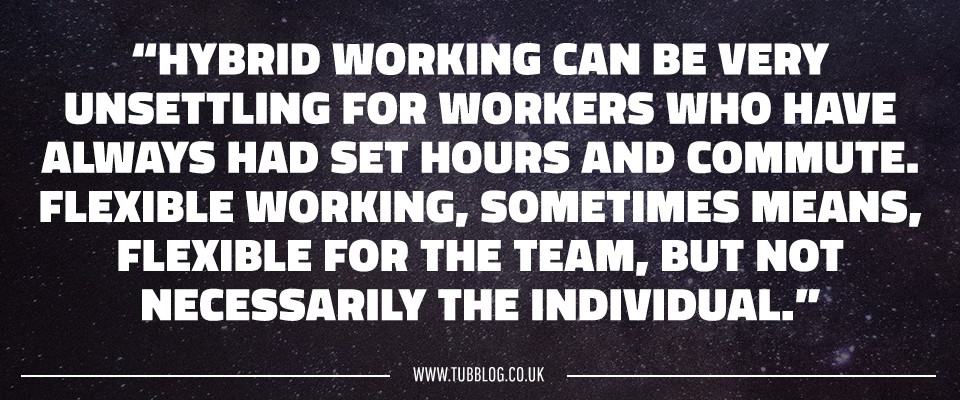
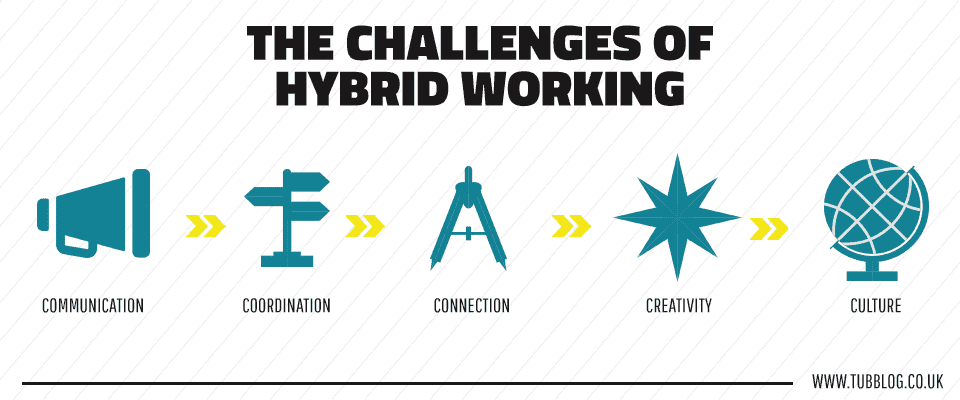
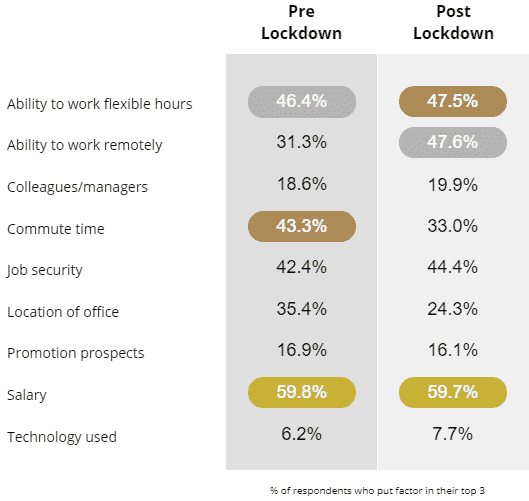
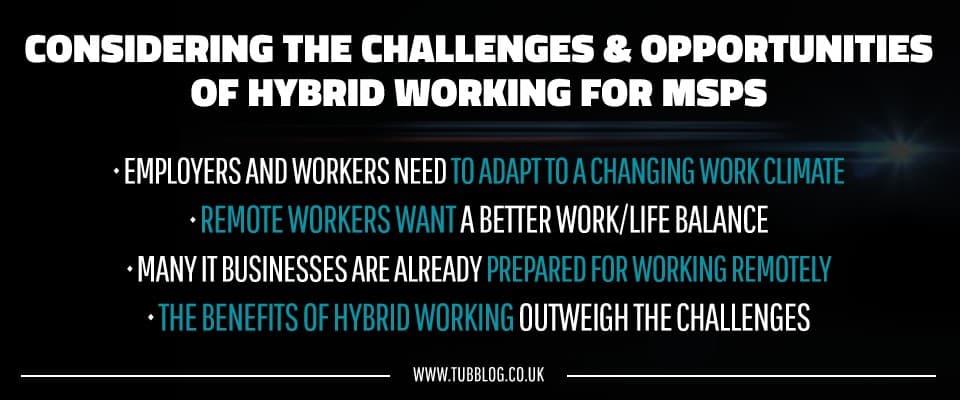













Comments
2 thoughts on Considering the Challenges and Opportunities of Hybrid Working for MSPs
JAKEHAR
12TH SEPTEMBER 2022 11:15:37
Thank you for a thoughtful article, that was quite a read!
STEPHEN MCCORMICK
13TH SEPTEMBER 2022 11:03:04
Thank you Jake. I know it was a long read, so I appreciate you reading it and taking the time to comment. :)